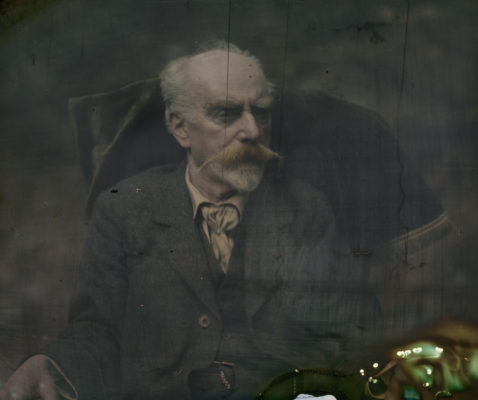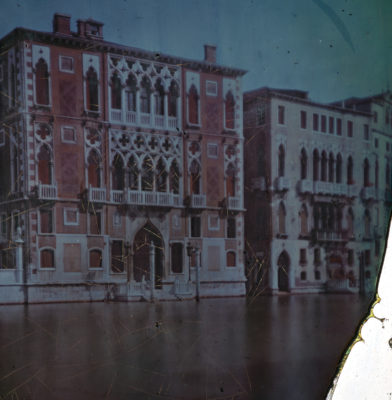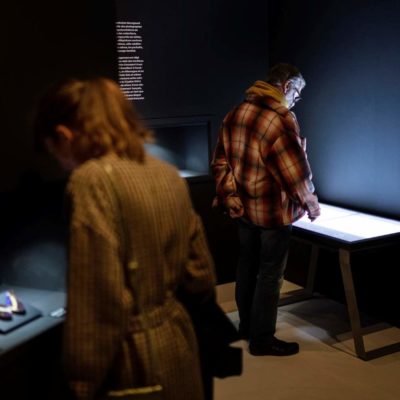Gabriel Lippmann
This exhibition is the culmination of several years of collaborative work by Photo Elysée. It highlights images from the Gabriel Lippmann collection held at the museum and produced using the interferential technique - the color process for which Gabriel Lippmann was awarded the Nobel Prize in Physics in 1908. The museum holds the largest collection of plates made by Lippmann himself and gathered in one institution (137 plates out of nearly 300 spread over all continents).
Given the complexity of the Lippmann plates, at the crossroads of several disciplines, encounters took place between researchers from different horizons, notably from the LCAV of the EPFL, as well as from the Sorbonne University. The Lippmann plate also allows us to appreciate the material and technical complexity of photography, sometimes overlooked or forgotten in our digital age.
The exhibition is divided into three themes that cover the major fields of research of which the Lippmann plate is part: the Lippmann plate as a museum object, or the importance of the visual experience; the Lippmann plate as a scientific object, or the importance of the process; and, finally, the Lippmann plate as an object of art history, or the importance of the image. The exhibition has also made it possible to initiate a project for a catalogue raisonné of the Lippmann plates, which will be carried out in parallel at a later date (2025- 2026).
Exhibition views
Credits
Curators
Nathalie Bouloch and Pauline Martin, with the collaboration of Manuel Sigrist
Scientific advisors
Jean-Marc Fournier, Tatyana Franck, Carole Sandrin, Martin Vetterli
Coordinators
Emilie Chenevard et Mélanie Therond
A collaboration with the EPFL
To better understand the complexity of interference photography, Photo Elysée joined forces with the AudioVisual Communications Laboratory (LCAV) of the Swiss Federal Institute of Technology in Lausanne (EPFL). This partnership not only allowed us to study the process, but also to explain it and present it to the public in an innovative way.
In this exhibition, the display cases in which the plates are presented required research at the Swiss Federal Institute of Technology in Lausanne (EPFL) to create a unique lighting system, adapted to the observation of each original image.
Observing a Lippmann plate is most often a solitary experience: the object can only be seen well by one person at a time. In his time, Gabriel Lippmann made projections, allowing a large audience to see the same image at the same time and to agree on the perceived colors. With the help of the EPFL, we were able to recreate such a projection using contemporary plates that the EPFL's research has realized.
This exhibition is supported by the Agora grant (FNS).










